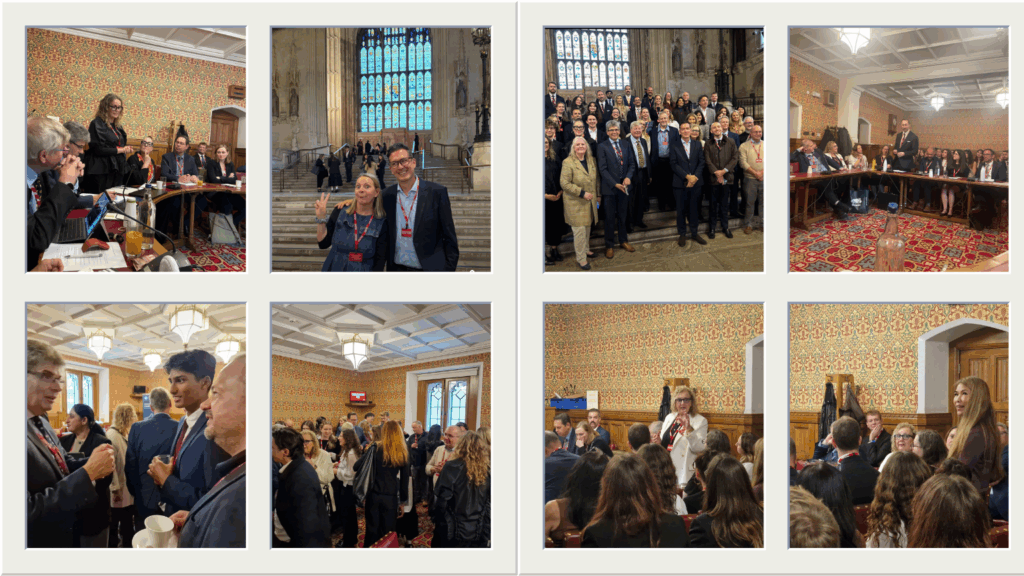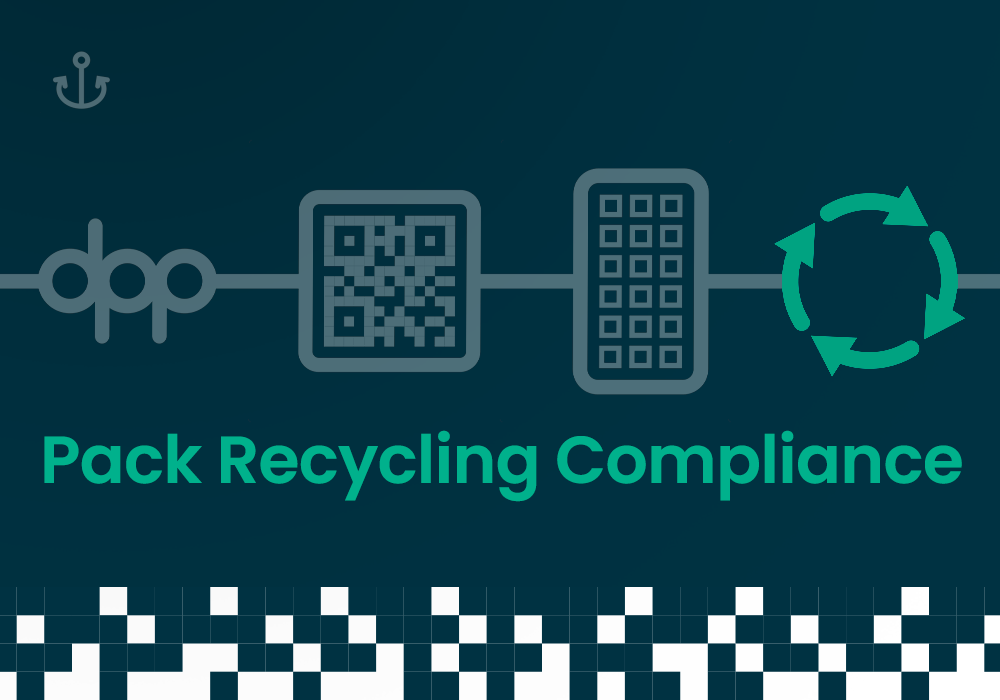Circular Economy Exchange: 2nd Year Anniversary at The House of Lords
Highlights:
This September, the House of Lords hosted the second anniversary of the Circular Economy Exchange, convened by Lord Erroll and Baroness Uddin. Leaders from government, retail, academia, technology, and the charity sector came together for a candid conversation about the future of fashion and the shared responsibility to accelerate the circular economy.
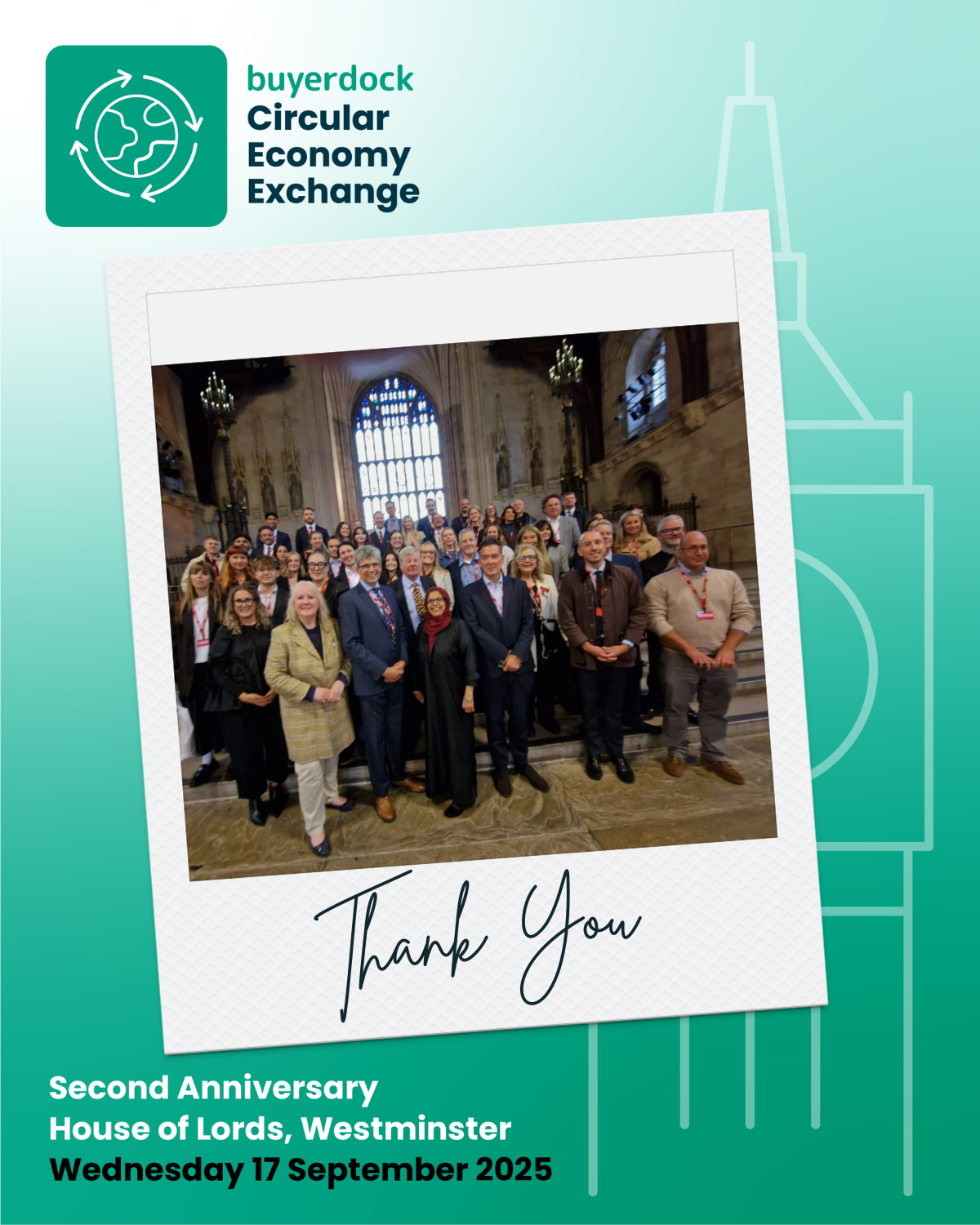
The Big Question: Who Leads?
A central theme of the discussion was whether progress should be driven by consumers or legislation. Some argued that shoppers largely “follow the pack,” and that real change will come only when governments set stronger rules. Others stressed that legislation must be smart — designed to pull behaviour in the right direction rather than drown businesses in reporting.
Overproduction: Fashion’s Fault Line
Few challenges loomed larger than overproduction. Salli Deighton, founder of LaundRe, highlighted that a quarter of garments are never sold, and 40% are never sold at full price. In denim alone, her new Canning Town hub is recovering value from stock that would otherwise be wasted — proving that circular business models can be both sustainable and profitable.
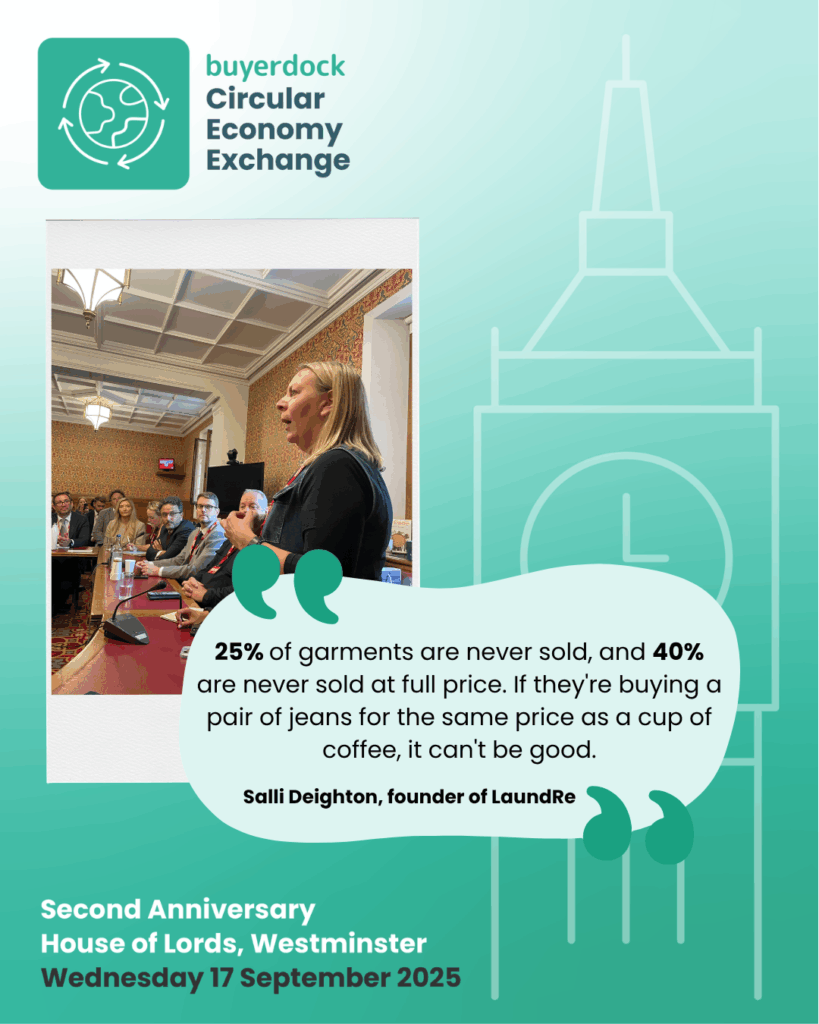
The footwear sector faces its own crisis: 23 billion shoes go to landfill globally each year. While some brands are pioneering refurbishment and resale programmes, the industry needs infrastructure before it can scale modular design or recycling.
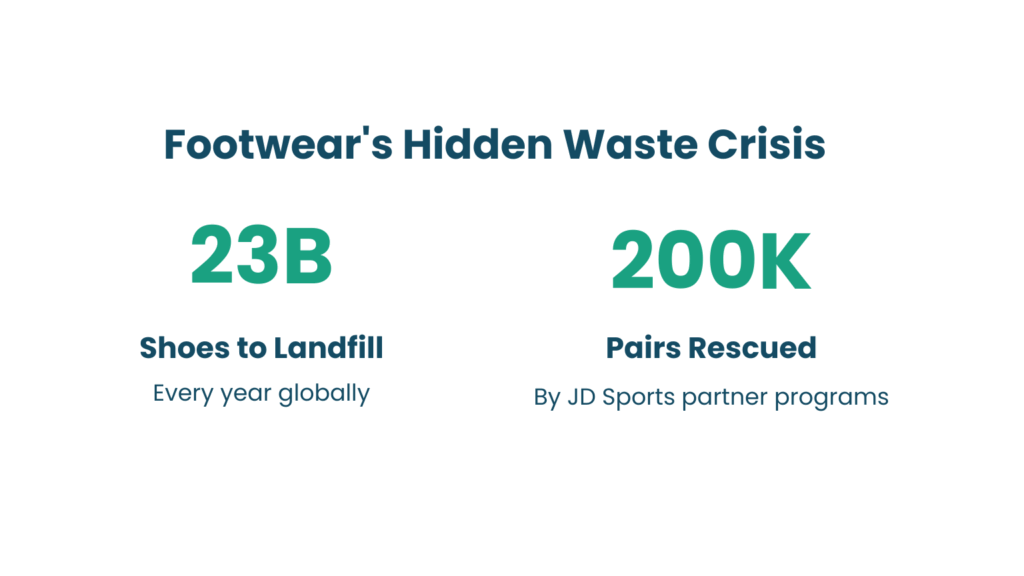
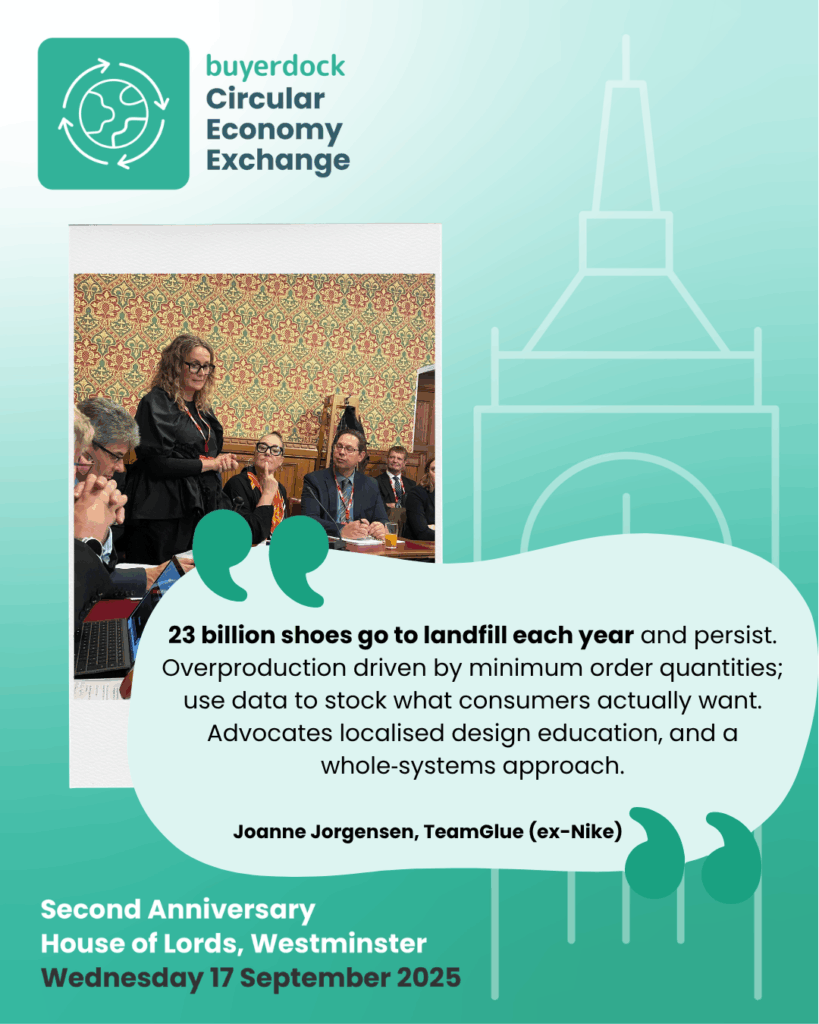
Digital Product Passports: Promise and Barriers
Technology was also in the spotlight. Digital Product Passports (DPPs) are emerging as a key tool to connect consumers with trustworthy product information — from carbon footprints to recyclability. But barriers remain: cost, digital skills gaps, and unclear messaging to shoppers. The consensus was clear: the tools exist, but support and education are vital for implementation.
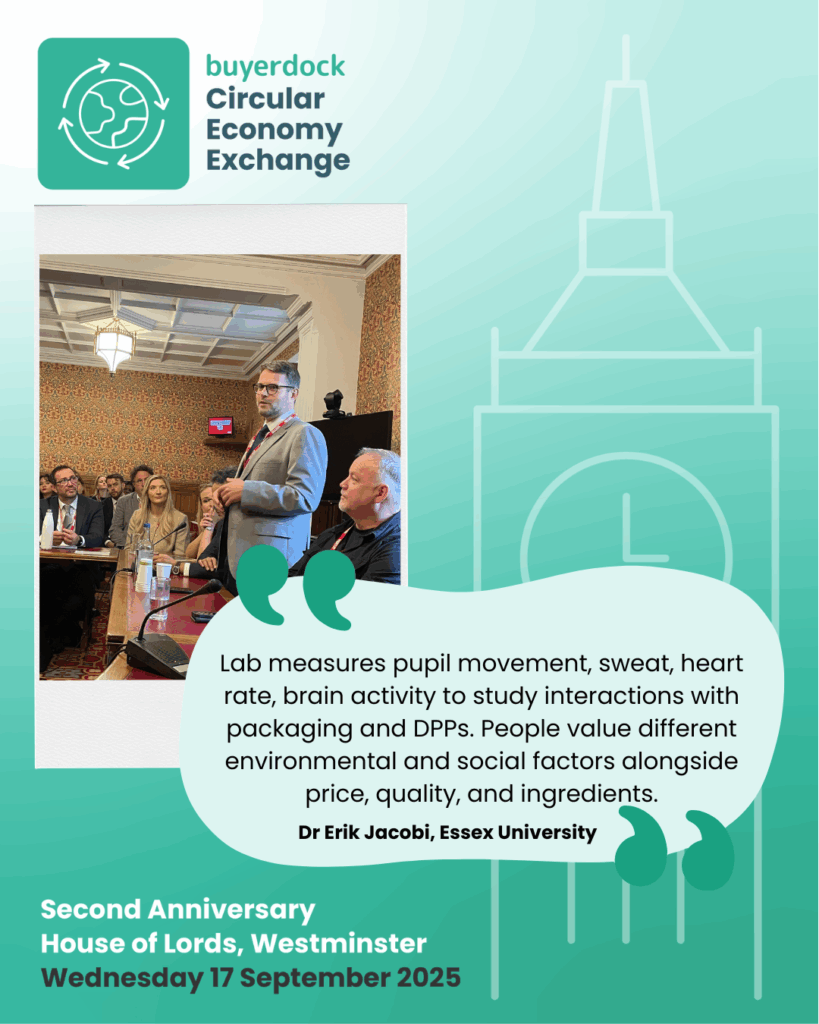
Education: Turning a Million Titanics
The skills needed to design for circularity are still scarce. While initiatives from ASOS, The North Face, IKEA, and the Circular Textile Foundation are building momentum, progress feels like “turning a million Titanics.” Repair culture, modular design, and material innovation need to be taught from schools to boardrooms if circular fashion is to scale.
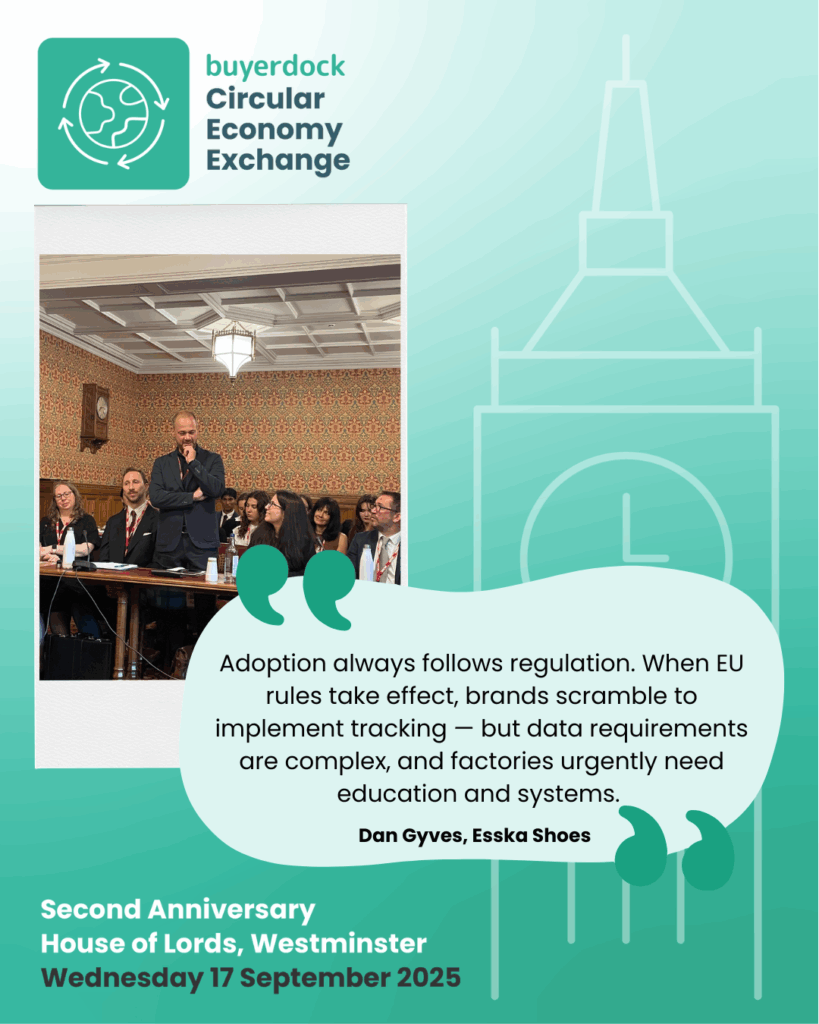
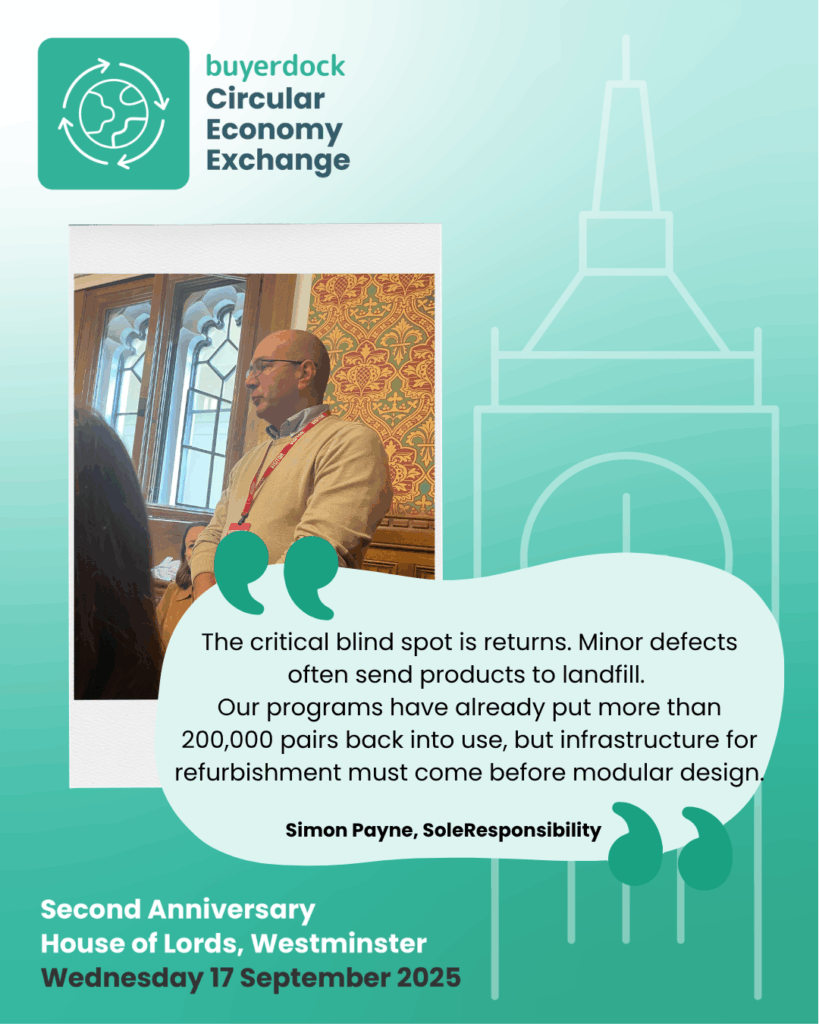
Consumer Behaviour and Regulation
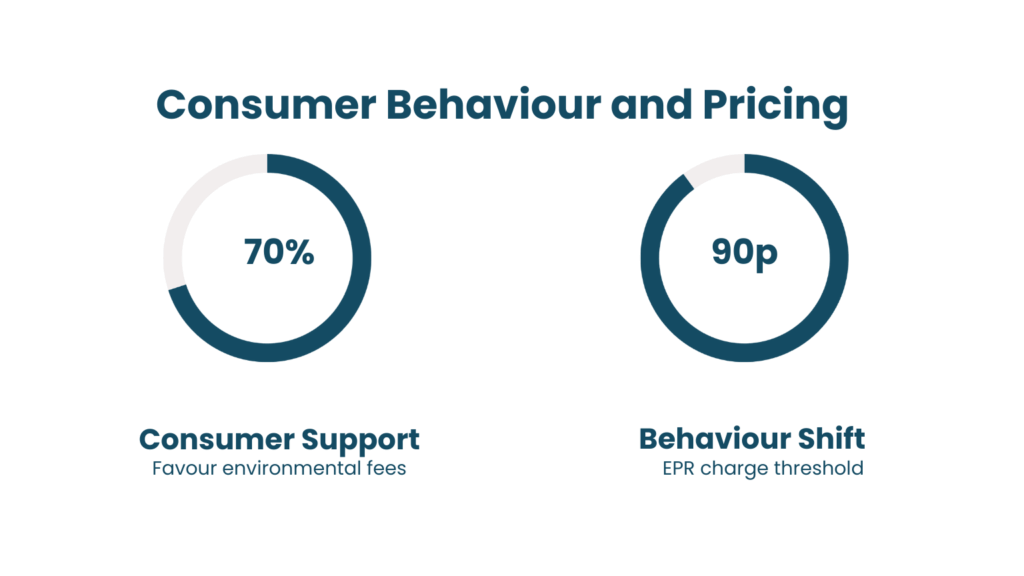
Encouragingly, research shows that seven in ten consumers support environmental fees. Behaviour begins to shift when charges near £1, suggesting that policy and consumer readiness are starting to align. Meanwhile, the EU has set a bold target: by 2030, 30% of garments must be born circular. The UK risks falling behind without similar commitments.
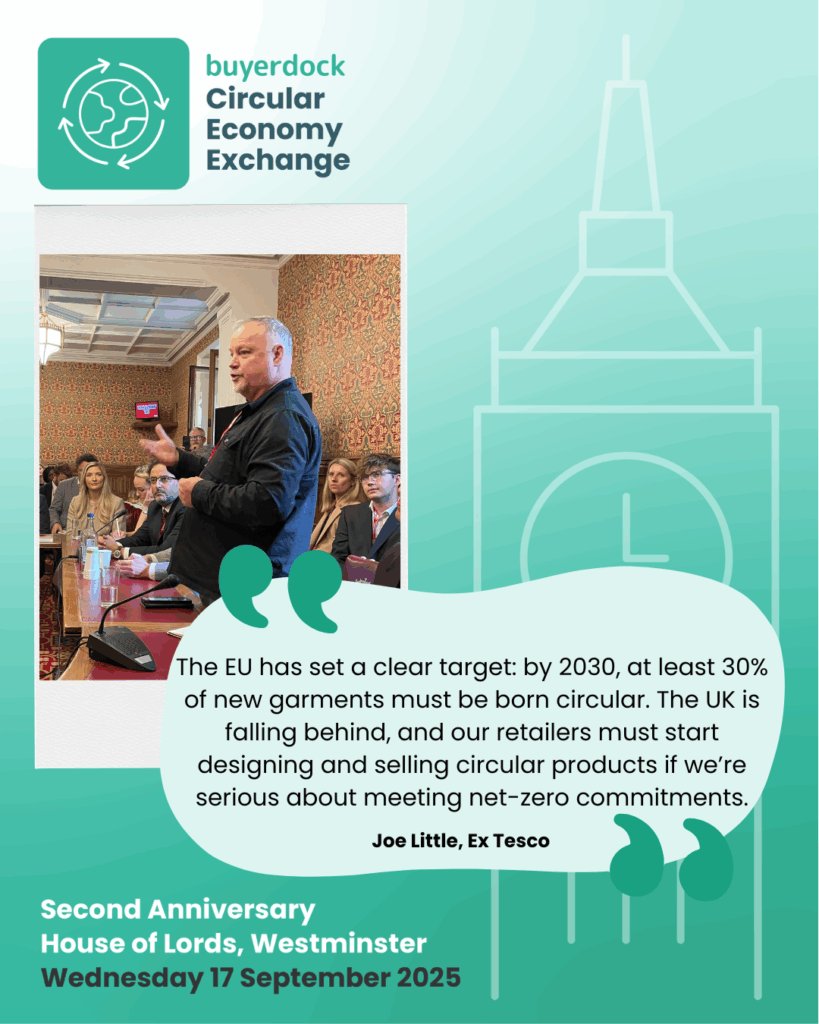
Social Impact and Global Responsibility
The discussion also touched on the social side of fashion. Rosalind Bluestone MBE of Goods for Good highlighted the dual challenge of poverty and waste, with over four million UK children unable to afford school uniforms even as branded items sit stranded in warehouses due to minor logo changes. Globally, harmful production practices and the export of second-hand clothing continue to raise ethical questions that cannot be ignored.
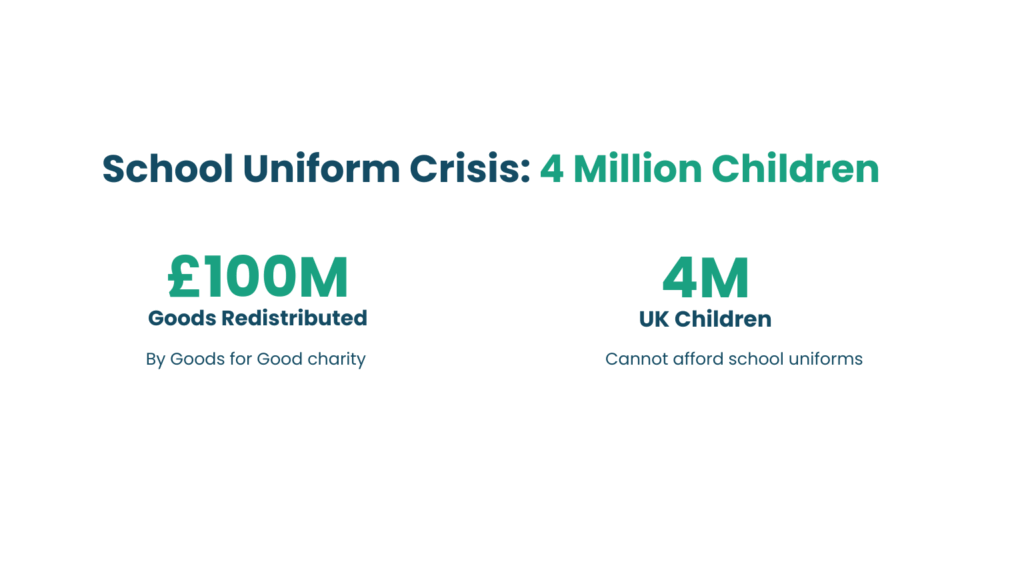
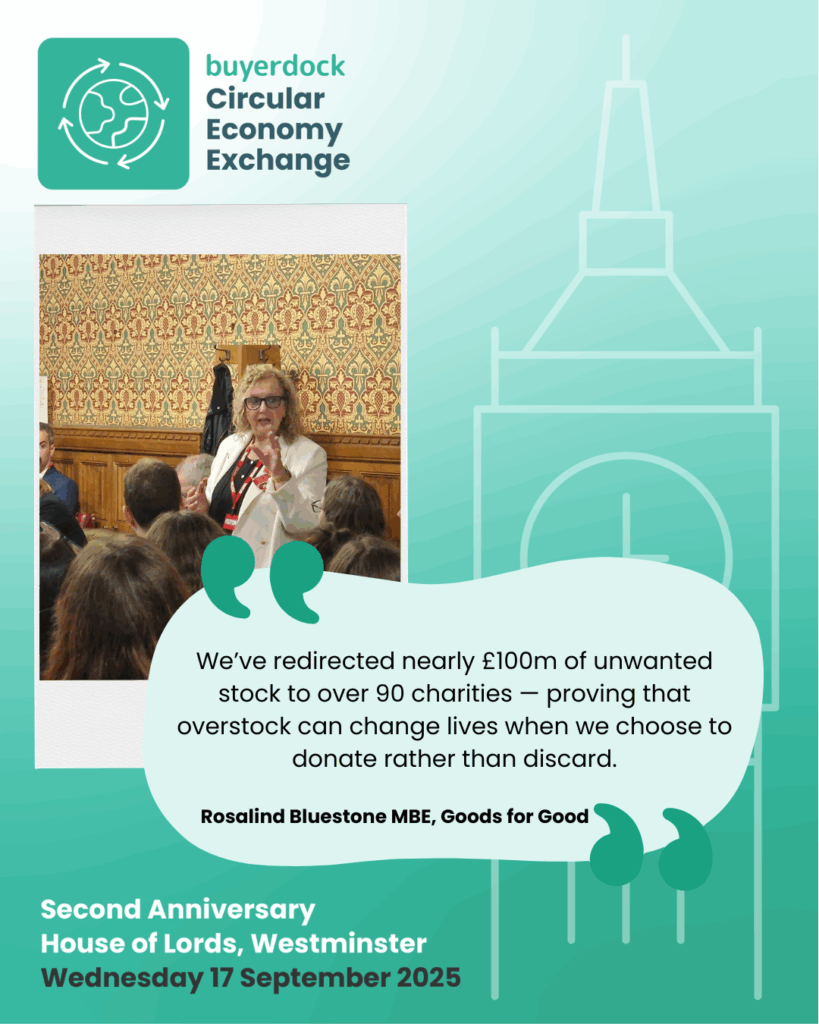
Smarter Legislation, Shared Action
Lord Erroll closed with a call for incentives over punishment. Overly complex laws risk favouring only the largest players, while nudges and small signals — from bottle deposits to simple product labels — can shift behaviour at scale.
A Collective Mission
The message from the Exchange was unmistakable: no single group can solve fashion’s waste crisis. Real progress requires shared responsibility between consumers, businesses, charities, and policymakers. With the right mix of legislation, incentives, and education, circular fashion can move from a niche ambition to a scalable reality.
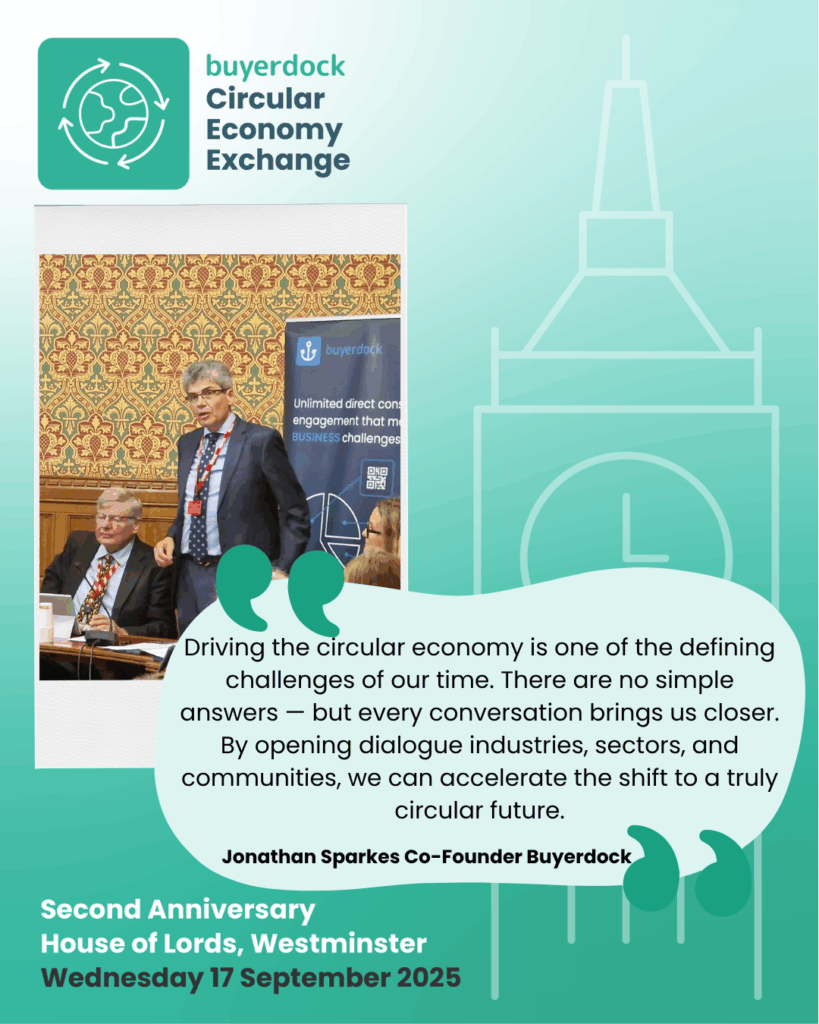
The next Circular Economy Exchange will be at St. Annes Church, 55 Dean Street, London. W1D 6AF on the 8th of October. Click to RSVP.
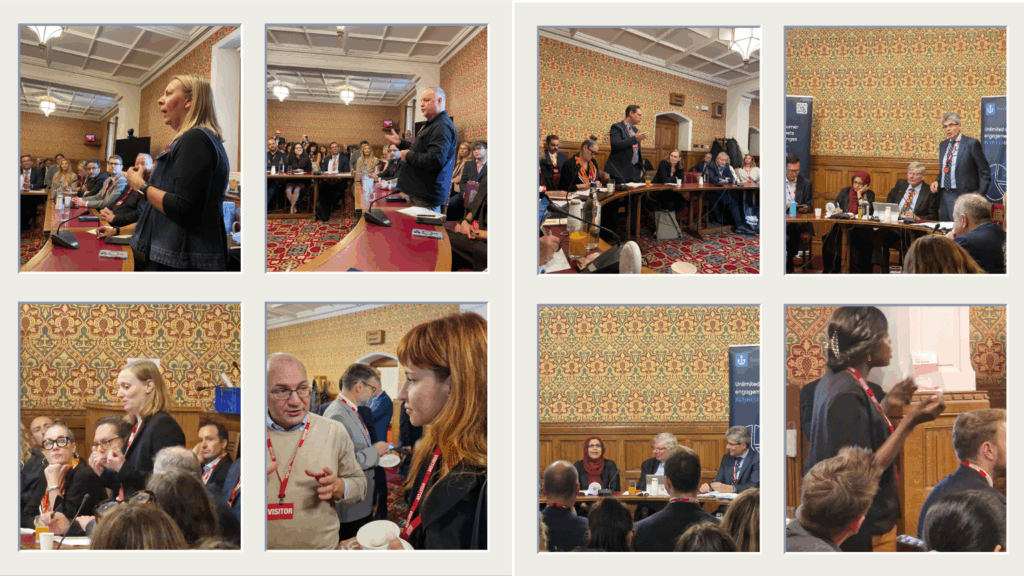
House of Lords Roundtable | September 17, 2025
